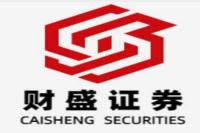Southbound Capital Flow: A Deep Dive into the Hong Kong Stock Market
Meta Description: Dive deep into the world of southbound capital flow and understand its impact on the Hong Kong stock market. Explore key drivers, recent trends, and expert insights into this dynamic investment landscape.
Imagine yourself as a seasoned investor, meticulously analyzing market trends, seeking the next big opportunity. You've heard whispers about southbound capital flow and its influence on the Hong Kong stock market, but the details remain elusive. This article is your gateway to unraveling the mysteries of this powerful force, providing you with the tools and knowledge to navigate this ever-evolving investment landscape.
We'll delve into the history, mechanics, and impact of southbound capital flow, exploring its key drivers and recent trends. We'll uncover expert perspectives and examine the potential opportunities and risks associated with this dynamic market force. By the end of this journey, you'll have a comprehensive understanding of southbound capital flow and its implications for your investment decisions.
Get ready to unlock the secrets of this crucial market driver and gain valuable insights to empower your investment strategies.
Southbound Capital Flow
Southbound capital flow refers to the investment of mainland Chinese capital into Hong Kong's stock market. This phenomenon has been a significant driver of growth and volatility in the Hong Kong market, with investors seeking to diversify their portfolios and capitalize on opportunities in the region.
Understanding its mechanics is crucial for investors looking to capitalize on this trend. The Stock Connect program underpins this flow, acting as a bridge between mainland and Hong Kong exchanges. This program allows qualified investors to purchase stocks listed on each other's exchanges, creating a seamless flow of capital.
Historical Perspective
The southbound capital flow story began in 2014 with the launch of the Shanghai-Hong Kong Stock Connect. This program allowed mainland investors to buy Hong Kong-listed stocks through a designated trading platform. The program was later expanded to include Shenzhen-listed stocks through the Shenzhen-Hong Kong Stock Connect, further expanding the scope of southbound capital flow.
Key Drivers
Several factors drive southbound capital flow, making it a powerful force shaping the Hong Kong stock market.
- Diversification: Mainland investors seek to diversify their portfolios beyond the mainland market, aiming to mitigate risk and access new investment opportunities.
- Market Access: The Stock Connect program provides mainland investors with direct access to a wider range of investment options available in Hong Kong, including blue-chip companies and emerging growth sectors.
- Valuation Differences: Mainland investors often perceive Hong Kong stocks as undervalued compared to their mainland counterparts, making them attractive investment targets.
- Economic Growth: China's economic growth and rising middle class have fueled an increase in wealth and investment capital, driving increased southbound capital flow.
- 政策支持: The Chinese government actively supports southbound capital flow, encouraging mainland investors to invest in Hong Kong and strengthen the financial ties between the two regions.
Recent Trends and Implications
The southbound capital flow has experienced a significant upswing in recent years, reflecting a growing interest in the Hong Kong market among mainland investors. This trend has been driven by factors such as the economic recovery in China and the strong performance of Hong Kong stocks.
Here's a closer look at some of the recent trends:
- Increased Net Inflows: Southbound capital flow has consistently resulted in net inflows into the Hong Kong stock market, with investors purchasing more Hong Kong stocks than they sell. This trend indicates strong confidence in the market's future potential.
- Focus on Specific Sectors: Mainland investors have shown a particular interest in specific sectors, such as technology, healthcare, and consumer discretionary, reflecting their long-term growth prospects.
- Influence on Stock Prices: The influx of southbound capital has had a significant impact on stock prices, contributing to the overall upward trend in the Hong Kong market.
- Volatility: While southbound capital flow can drive market growth, it can also contribute to increased volatility, particularly during periods of uncertainty or market correction.
Understanding these trends is crucial for navigating the Hong Kong stock market and making informed investment decisions.
Expert Insights and Perspectives
Leading financial analysts and market experts offer insightful perspectives on the southbound capital flow and its implications.
- "Southbound capital flow is a key driver of growth and volatility in the Hong Kong stock market," says [Name of leading financial analyst] at [Name of financial institution]. "It's important for investors to understand the underlying factors driving this flow and how it influences investment opportunities."
- [Name of market expert] from [Name of market research firm] highlights the "growing diversification needs of mainland investors" as a major factor driving southbound capital flow. "With access to a wider range of investment options in Hong Kong, mainland investors are seeking to optimize their portfolios and reduce exposure to domestic market risks."
These insights underscore the importance of monitoring southbound capital flow and its impact on the Hong Kong stock market.
Opportunities and Risks
Southbound capital flow presents both opportunities and risks for investors. Understanding these aspects is vital for making sound investment decisions.
Opportunities:
- Growth Potential: The influx of southbound capital can drive growth in specific sectors and the overall market, creating opportunities for capital appreciation.
- Diversification: Southbound capital flow allows investors to access a wider range of investment options and diversify their portfolios beyond mainland markets.
- Long-Term Growth: The long-term economic growth of China and the increasing wealth of its middle class continue to fuel southbound capital flow, suggesting potential for sustained growth in the Hong Kong market.
Risks:
- Volatility: The flow of southbound capital can contribute to increased volatility in the market, making it difficult to predict short-term price movements.
- Market Correction: During periods of market correction or economic uncertainty, southbound capital flow can reverse, leading to price declines and potential investment losses.
- Valuation Bubbles: The influx of southbound capital can inflate valuations in certain sectors, creating bubbles that may eventually burst.
Investors should carefully assess these opportunities and risks before making investment decisions.
Frequently Asked Questions
Q: How can I participate in southbound capital flow?
A: You can participate in southbound capital flow by investing in Hong Kong-listed stocks through the Stock Connect program. This requires opening a brokerage account with a licensed broker in Hong Kong and meeting certain eligibility criteria.
Q: What are the key factors to consider before investing in Hong Kong stocks through southbound capital flow?
**A: **
- Market Conditions: Analyze market trends, economic indicators, and industry dynamics in the Hong Kong market.
- Company Fundamentals: Evaluate the financial health, growth prospects, and competitive landscape of target companies.
- Valuation: Compare valuations of Hong Kong-listed stocks with their mainland counterparts to identify potential investment opportunities.
- Risk Tolerance: Assess your personal risk tolerance and choose investments that align with your investment goals and time horizon.
Q: What are the potential benefits of investing in Hong Kong stocks through southbound capital flow?
A:
- Diversification: Access a wider range of investment options and diversify your portfolio beyond mainland markets.
- Growth Potential: Capitalize on the growth potential of the Hong Kong market, driven by economic growth and southbound capital flow.
- Exposure to International Markets: Gain exposure to international companies and investment opportunities through Hong Kong's position as a global financial hub.
Q: What are the potential risks associated with southbound capital flow?
A:
- Market Volatility: The influx of southbound capital can lead to increased market volatility, making it difficult to predict short-term price movements.
- Currency Fluctuations: Currency fluctuations between the Chinese Yuan and Hong Kong Dollar can impact investment returns.
- Political Risks: Political events in both China and Hong Kong can influence market sentiment and investment decisions.
Q: How can I stay informed about southbound capital flow and its impact on the Hong Kong stock market?
A:
- Financial News and Market Data: Follow reputable financial news sources and market data providers for updates on southbound capital flow and its impact.
- Expert Analysis: Consult with financial advisors or investment professionals with expertise in the Hong Kong market.
- Research and Analysis: Conduct your own research and analysis on companies and sectors to make informed investment decisions.
Conclusion
Southbound capital flow has emerged as a transformative force in the Hong Kong stock market, driving growth, volatility, and investment opportunities. Understanding its mechanics, key drivers, recent trends, and potential implications is crucial for investors seeking to navigate this dynamic market.
By staying informed and making well-informed decisions, investors can leverage the opportunities presented by southbound capital flow while mitigating potential risks. Remember, thorough research, expert insights, and a balanced approach are essential for successful investment in the Hong Kong stock market.
This exploration of southbound capital flow is just the beginning of your investment journey. Continue to explore, learn, and adapt your strategies as the market evolves. Remember, the future of your investment success depends on your ability to stay informed and make wise choices.



